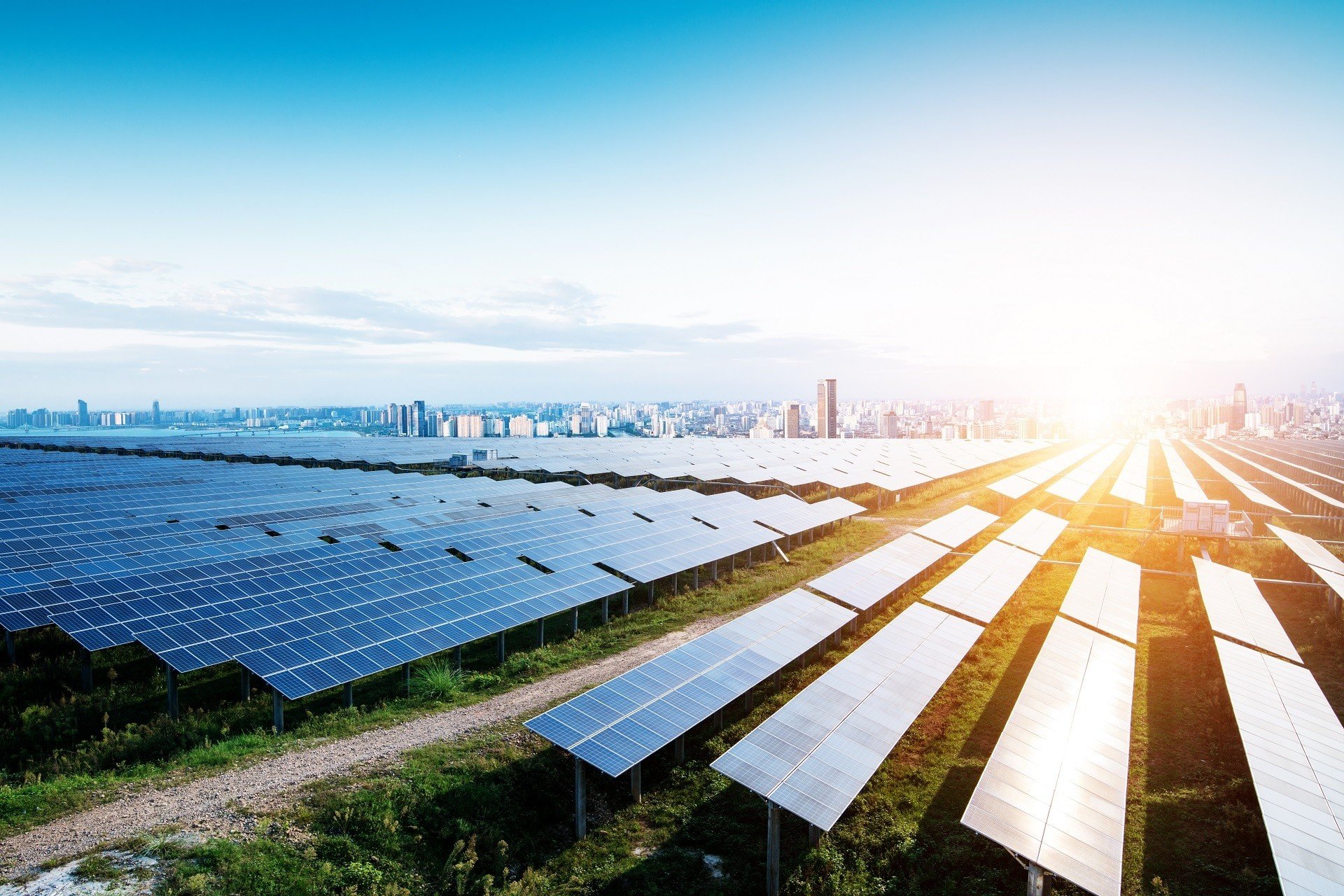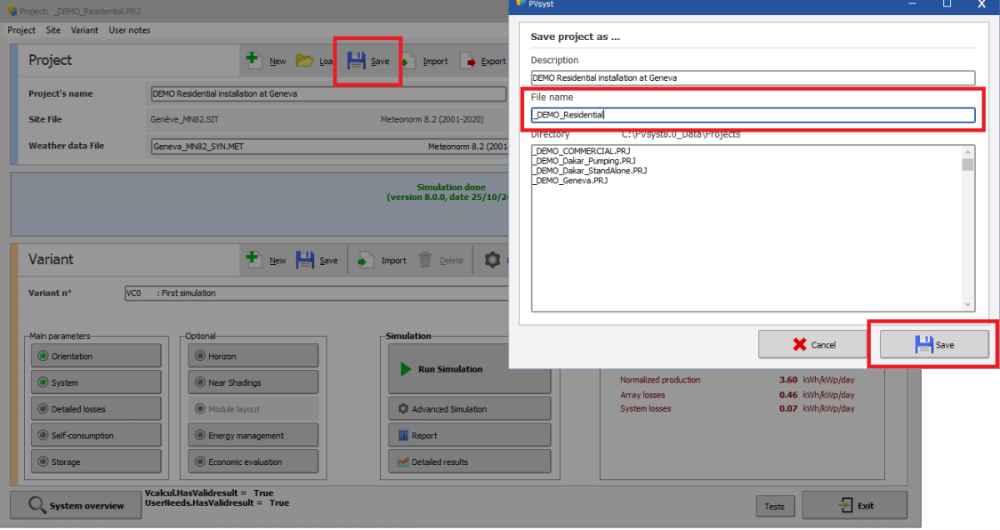-
Posts
128 -
Joined
-
Last visited
Everything posted by Hizir Apaydin
-
Dear Swonno, In the report settings, it is possible to adjust the global energy production unit via Report options > Final report options > Energy unit, and you can also set the number of decimals for percentage values shown in the loss diagram. Regards
-
Dear Ellie, Thank you for reaching out. The behavior you mentioned is a known issue in PVsyst, and we have already scheduled it for integration in an upcoming version. We apologize for any inconvenience this may cause and appreciate your patience. Best regards,
-
Dear customer, The number of decimal places displayed for the nominal power on the report's cover page depends on the power itself and predefined thresholds. It's not configurable, PVsyst automatically adjusts the precision based on the size of the value to make it more readable. Best regards,
-
Dear Fujita Ane, Could you please check that Arial Unicode MS Normal is present in your C:\Windows\Font folder as below: If this font is correctly installed, we kindly invite you to report your issue via email to support@pvsyst.com Regards
-
Dear Nikoloz, When clicking on "Save" from the main project window, you are free to update the project file name and replace "_" by "." . Then, when generating the report and saving the PDF file, it will keep the dots. Best regards
-
Dear Nabil, Could you please indicate us which version of PVsyst you are using? The second warning message you mentioned should not appear in last versions of PVsyst. We invite you to send your log and project files to support@pvsyst.com for a more detailed analysis. (main menu File>Export logs and File>Export projects) Best regards
-
Dear Swonno, Does this happen with all fields or only Y axis field? Which version of PVsyst do you use and what is your Windows system language ? For a specific support on this issue, please send your requests to support@pvsyst.com Best regards,
-
Dear Nikoloz, Thank you for bringing this issue to our attention. It was indeed introduced in PVsyst 8. We have noted the problem and will address it in a future update. Best regards,
-
Dear Vasil, Thank you for reaching out. Here are some steps you can follow to troubleshoot and resolve this error: - Ensure the CSV file is located in a directory you have access to. Avoid locations like system directories (e.g., C:\Windows) or removable drives that might not always be accessible. - Verify File Access and Permissions: Right-click the file, select Properties, and go to the Security tab. Ensure that your user account has "Read" and "Write" permissions for the file. If you're not the owner of the file, you may need to request access or take ownership (if permitted). - Ensure the file isn’t open in another program (e.g., Excel). Close any applications that might be using the file and try again. Confirm that the file format is correct and compatible with the software you're using. Some programs may have stricter requirements for CSV formatting. - If the file path is very long or contains special characters, consider moving the file to a simpler directory (e.g., C:\Users\YourUsername\Documents) and renaming it with only alphanumeric characters. If the issue persists, try running PVsyst as an administrator. Right-click the program shortcut and choose Run as Administrator. If these steps do not resolve the problem, please send your CSV file to support@pvsyst.com, and we’ll be happy to assist further. Best regards.
-

Fixed Tilt and Tracker Shown in Report
Hizir Apaydin replied to Shashank Sharma's topic in Simulations
Dear Shashhank, We invite you to export and send your project to support@pvsyst.com for a detailed analysis. You can export your project from PVsyst main menu File>Export project Kind regards. -
Dear Gabriel, No tables appear on the graph in the module layout printing screen. To resolve this, try zooming out or repositioning the scene to make them visible. Once adjusted, they should display correctly in the report. If the issue persists, please export your project (via the main menu: File > Export project) and send it to support@pvsyst.com for assistance. Best regards.
-

No single-line diagram after doing economic calculation
Hizir Apaydin replied to Branimir Amidzic's topic in Problems / Bugs
Dear Branimir, We have never encountered single-line diagram priting issue related to the economic evaluation calculation. You are kindly requested to export and send your project file (PVsyst menu File>Export project) to support@pvsyst.com for a detailed investigation. Regards -
Dear Abeer, If you mean aligning the PV tables and shading objects with the 3D scene grid lines, this option does unfortunately not exist. Regards
-
Dear Loubna, The trial version includes all the features of the licensed version for one month, without any limitation except a watermark in the report indicating that you are using the TRIAL version. You can then simulate a fictive project, as soon as you are in the 1-month evaluation period allowed by the TRIAL version. Regards
-

Economic evaluation of a project does not calculate IRR.
Hizir Apaydin replied to NickVar's topic in Simulations
Dear sir, You are kindly requested to export (main menu File>Export project) and send your project to support@pvsyst.com so that we may investigate the IRR calculation issue in your economic evaluation. Regards -

SLD page on reports from batch simulation
Hizir Apaydin replied to AndreaGPC's topic in Problems / Bugs
Dear Andrea, It's currently not possible to configure pages of the report generated by the batch mode. All applicable and valid sections for the variant are displayed in the report. But we have already planned to include such improvement in an upcoming version Regards. -
Dear Swonno, You probably selected "Own origin" in the rotation tool. Trees are then rotating on their own axis. You need to change the orientation axis to "Scene origin" or "First selected object": Regards
-
Dear Swonno, This is strange. There is no mechanism in PVsyst which automatically transforms an array of tables to a single table. You can export and send us your project to support@pvsyst.com for further investigation (main menu File>Export project) Regards
-
Dear Swonno. In the first example, you selected "Create>Single PV table". This is not an array but a single photovoltaic table. That is why there is no option to select the number of tables and the distance between this tables. You need to select "Create>Array of tables" in order to be able to design mutiple tables in one array (that's why you did in the second example) Regards
-
Dear Laura, It's possible to have parallel installation of different minor versions of PVsyst (7.4, 7.5 etc...). However, it is not possible to install multiple patches of the same minor version in parallel (7.4.5 and 7.4.6 for example) as each patch of a minor version is intended to resolve an operating or calculation problem of the current minor version, it is not recommended nor permitted to keep the previous patched version. You can see in detail in this page all the all fixes and improvements made by version 7.4.6 compared to 7.4.5: https://www.pvsyst.com/release-notes/ A lot of issues have been addressed by this patch, and using version 7.4.5 will lead to inaccurate simulation results. If you still want to use version 7.4.5 for contractual or other reasons, you unfortunately have to uninstall version 7.4.6. You can also install version 7.4.5 on another computer, but this involves transferring your license between the two machines. We remind you that the number of license transfers is limited to 4 over a 30-day period. Kind regards
-
Dear Nikoloz, PVsyst logo and client logo are actually the same size. The width of your logo is determined by the largest component of the logo, which is "ENOVUS" label in your case, which is the same width as PVsyst logo (I put the two logos one below the other so you can compare the width). As the image of your logo is smaller than the label, it looks smaller than PVsyst logo, but they are the same width. As a test, if you remove the label from your logo, the size of the image will be automatically adjusted to have the same width as PVsyst logo image: There is no possibility to modifiy/increase the available space for the logo. Kinds regards
-

Optimum System Technical Requirements to run PVsyst 7.4.6
Hizir Apaydin replied to Arn's topic in How-to
Dear Arn, Performance issues on startup or general use of the interface you encounter cannot be related to your computer hardware configuration as your configuration is more than sufficient for using PVsyst. There should be another configuration/software issue on computer preventing the correct use of PVsyst. In PVsyst, simulation time may be long when defining complex 3D scenes. When defining a 3D scene in PVsyst, please check: - That you have not defined your terrain as a shading object (when selecting the terrain object, please uncheck “Enable shadow casting”) - That you have not defined many complex shading objects which are not really significant (for example trees) Also module layout configuration can have an impact on your simulation time. The use of the module layout is not recommended for systems bigger than 1 MWP. Kind regards -
Dear khaoula.rahrah, In the system definition window, PVsyst will guide you to select the number of modules in serie and the number of string according to the choosen desired power value, the PV module type and the inverter with a certain tolerance. In your project, you have selected modules of 500Wp power on 2 strings of 7 modules. So the nominal power is 500*2*7 = 7000wp. You can see this in the system summary section: You can manually adjust the number of modules in order to be as close as possible to 5000wp. Selecting 5 modules in serie will give you the desired nominal power: 500*2*5= 5000wp It is not always possible to have a nominal power equal to the desired power as it depends on the PV module nominal power, the inverter power and operating voltages Regards.
-
Dear Swonno, Even if the topography may not affect the shadings on your tables, It may affect the generation values as the azimuth and tilt of your panels are modified by the ground slope. Indeed, as you apply a slope on your tables, their final orientation will be different than their nominal / tilt orientation (orientation without any ground slope). You will find in this page a detailed explanation of this effect: https://www.pvsyst.com/help/baseslope.htm#:~:text=Base slope effect describes the,and performance of the panels. This effect is also described in this video tutorial: https://youtu.be/eq9pU5QWtpc Regards









